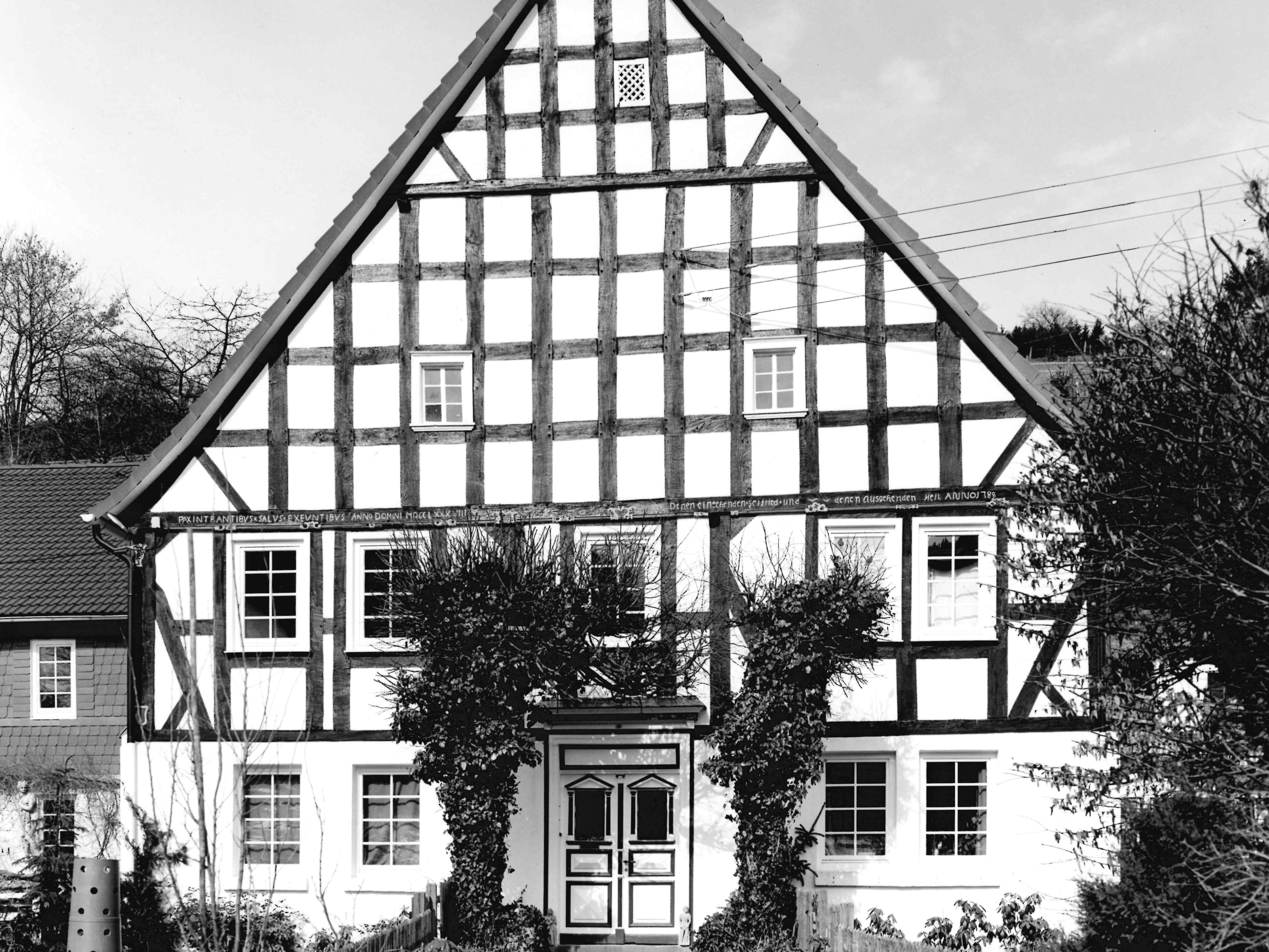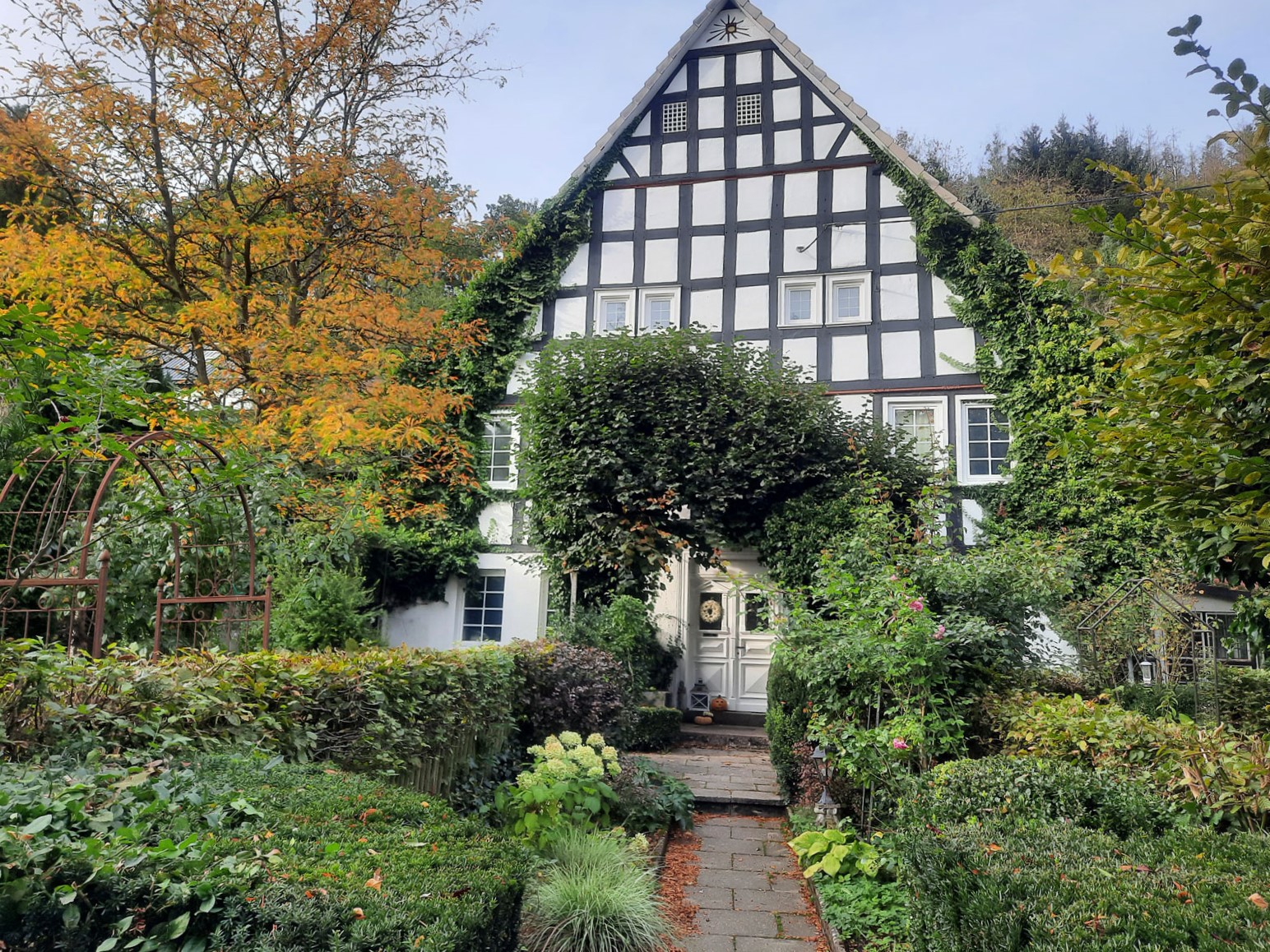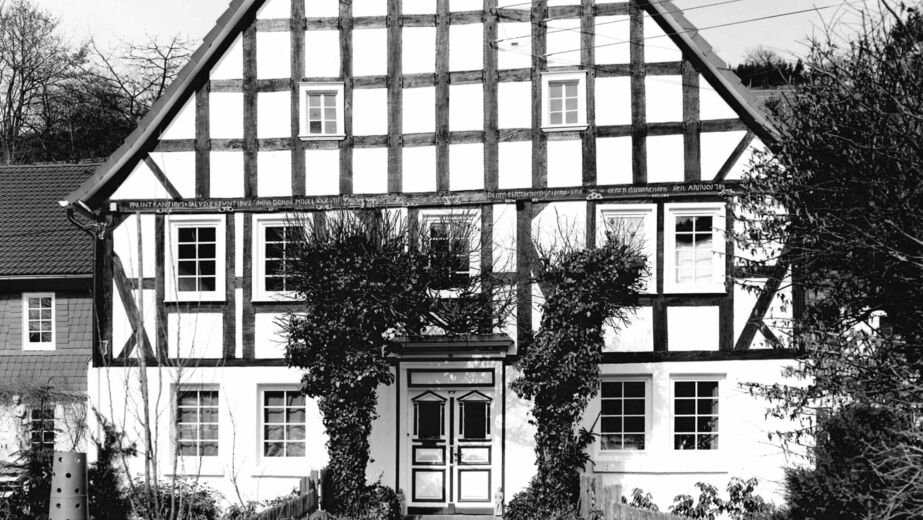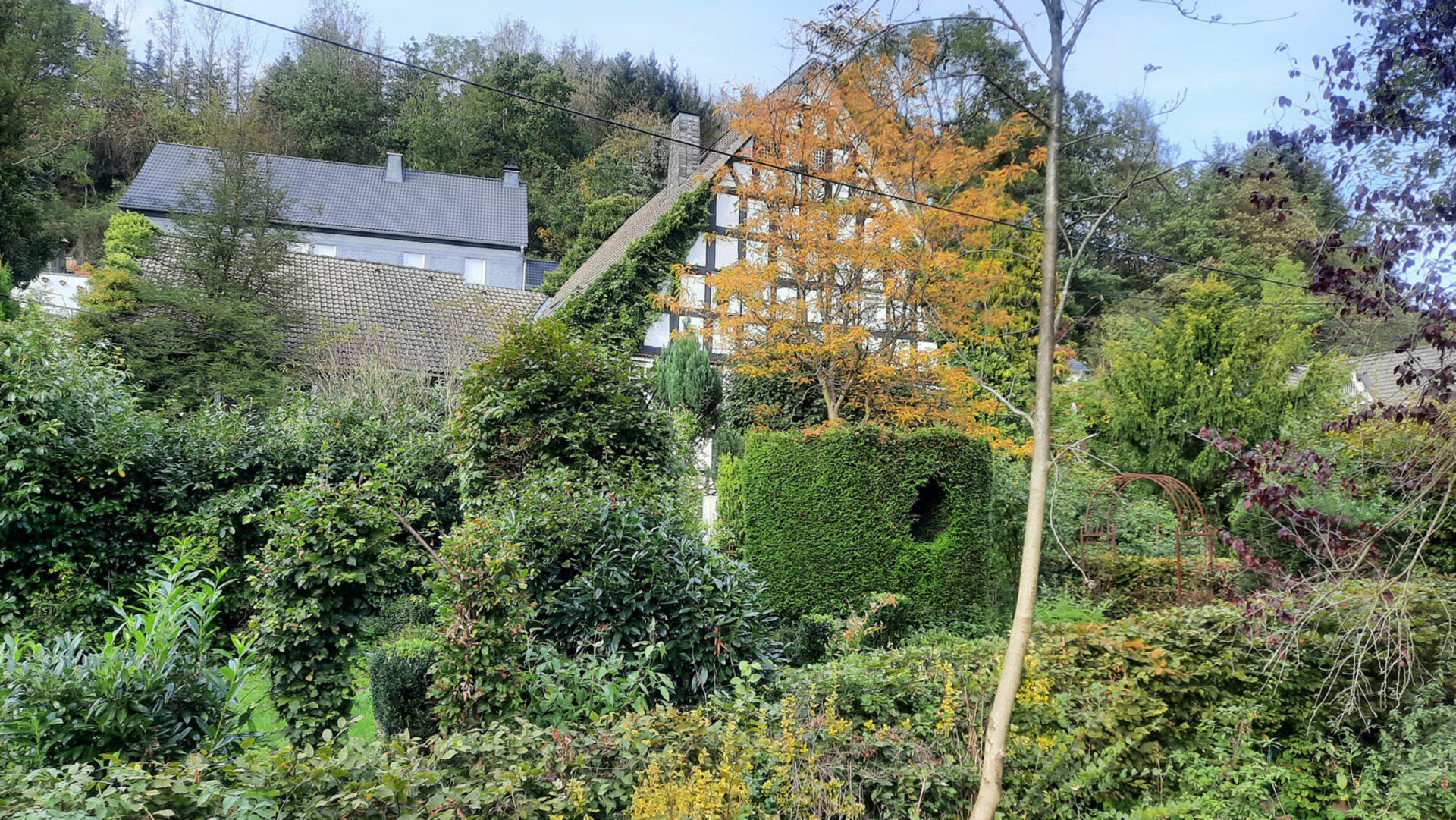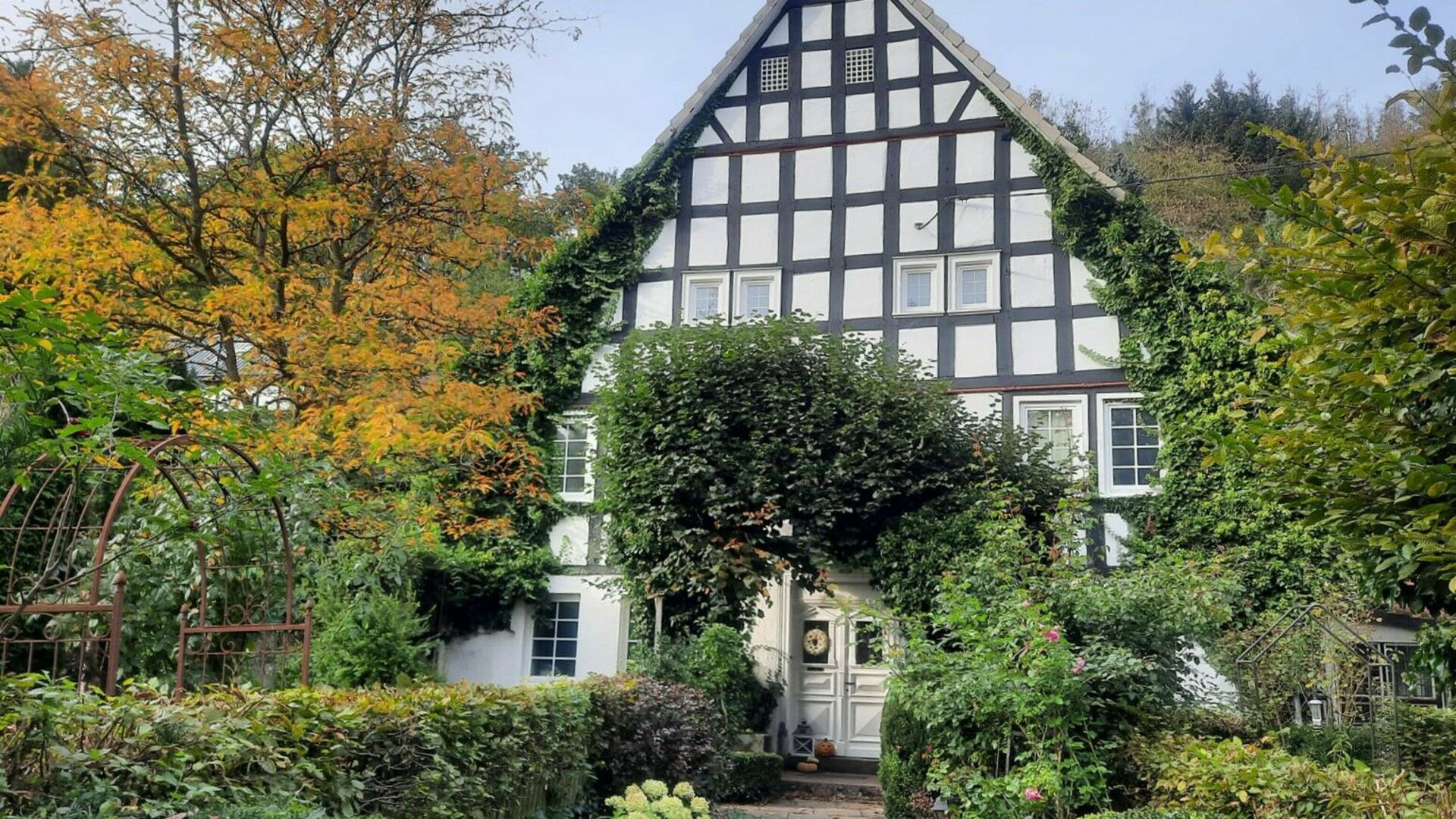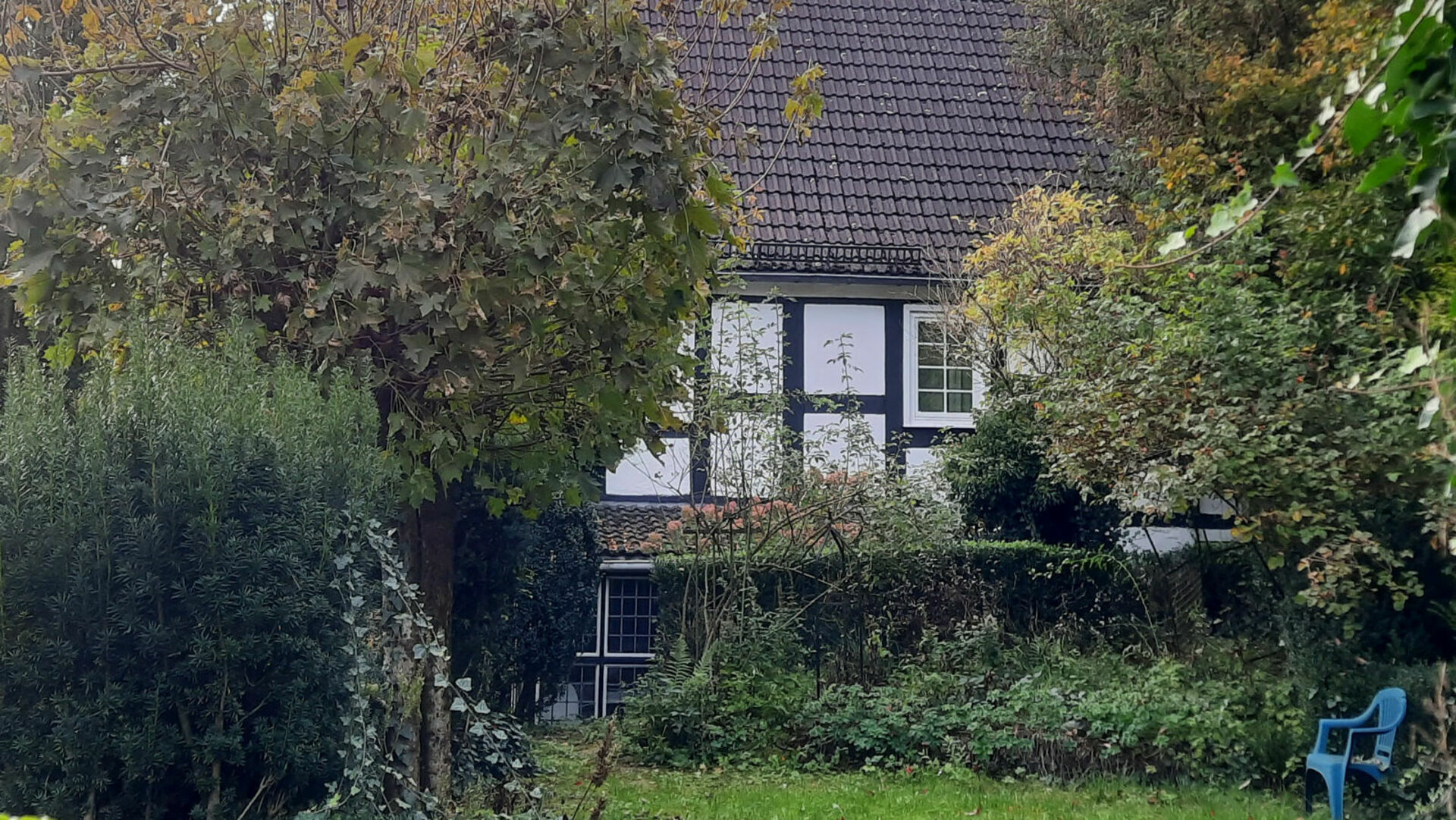House Kajan in Kirchrarbach
Haus Kajan is the oldest house in the Schmallenberg district Kirchrarbach. It was built in 1785 by Zadick Heinemann. Heinemann was a so-called "escort Jew": because Jewish people were not granted full civil rights for anti-Semitic reasons, they needed special permission to settle in a place. Despite the protests of some local residents, the Kirchrarbach pastor concluded a 40-year lease agreement with Heinemann. Heinemann then built a typical Sauerland half-timbered house on a vacant plot opposite the pastor's house, which was popularly known as the "Jews' house".
In Schmallenberg Werden Jews first mentioned in 1685. In 1738, two Jewish families lived here. Because they were not allowed to practice guild trades, Jews often traded or were butchers due to their religious slaughtering regulations, as was the second tenant of the house. There were also special rules for drinking water: Jewish houses needed their own well. Remains of this were discovered in a narrow corridor at the end of the 1970s.
In Westfalen there was a so-called Jewish order from 1700. According to this, Jews needed a minimum amount of property to settle in a place. They also had to pay extra taxes. Towards the end of the 18th century, efforts were made to relax the rules, which were considered old-fashioned, but the political upheaval following the French Revolution meant that this never happened.
The gravestone of Julius Steinberg, who was born in Würzburg in 1869, can still be found in the Jewish cemetery in Würzburg. Kirchrarbach was born in 1869.
The half-timbered house from 1785 is 14 meters high and has a roof area of 375 square meters. A substructure of oak beams indicates that the house was covered with slate at the time of construction. In 1979, the then 100-year-old covering was replaced with tiles. The sun-framed so-called owl hole under the ridge corresponds to the original condition. The open compartments underneath are oak latticed and were used for ventilation. The half-timbered structure was probably at least partially built on the quarrystone foundation walls of a previous building. A vaulted cellar has survived to this day; the bridge to the house also dates from this period. The resident assumes that parts of the first floor ceiling made of 80-90 cm wide larch boards also come from an earlier building. The half-timbering of the left wing of the house may have been built later. The beams are made of cheaper spruce wood, while oak was used in the main wing.
In the treasury lists of Westphalia there were tax lists specifically for Jewish people. 1777/78 Werden in Schmallenberg-Kirchrarbach "Sadich Heyneman with servants Aron and Seligman" mentioned; 1781 "Zadick". As spellings had not yet been established, Sadich and Zadick may have been the same person. Zadick Heinemann was the builder of the house. After a 40-year lease and several contractual disputes, Alexander "Zander" Steinberg from the Frankfurt area took over the house and grounds in 1860. He was a trader and butcher at the same time. His son Heinemann Steinberg redeemed the lease and took over the house completely, including the land register entry. In 1895, his grandson Isaak Steinberg sold everything for 12,750 marks to the teacher, sexton and organist Josef Heinemann, whose descendants lived in the house until 1978. Since then, it has belonged to the teacher Annemarie Kajan, who renovated the building in keeping with the times and also rented out vacation apartments for a long time.
Pax intrantibus, salus exeuntibus, anno domine 1788 - Peace to those entering, salvation to those leaving, in the year of our Lord 1788
Vertelleken
Chatting out of the sewing box...
When the church leased the property to Zadick Heinemann, he had to pay 120 Reichstaler once and 4 Reichstaler annually. At the end of the 40-year lease, he was to receive the 120 thalers back and the value of the house - unless he wanted to take it with him. (This was quite common at the time.) Now the pastor demanded the property back in 1825, but did not want to refund the 120 thalers as there were no documents to prove this. However, the vicarage had burnt down in 1795, along with the archive. Heinemann had to prove that the money had been paid. Rumour had it that a priest had put it in his own pocket. The royal district office ordered that the property should continue to be leased - despite the missing 120 thalers. Zadick Heinemann did not get his money back. And the next Jewish tenant but one, who eventually bought the house, had to declare that he would give up the 120 thalers that had so mysteriously disappeared.


